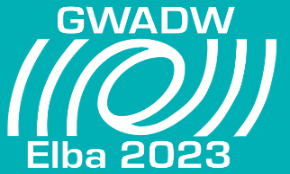Speaker
Daniel Hartwig
(Universität Hamburg)
Description
The seismically excited motion of high-Q pendula in gravitational-wave observatories sets a sensitivity limit to sub-audio gravitational-wave frequencies. Here, we report on the use of machine learning to successfully predict the motion of a high-Q pendulum with a resonance frequency of 1.4 Hz that is driven by natural seismic activity. We achieve a reduction of the displacement power spectral density of 40 dB at the resonant frequency 1.4 Hz and 6 dB at 11 Hz. Our result suggests that machine learning is able to significantly reduce seismically induced test mass motion in gravitational-wave detectors in combination with corrective feed-forward techniques.
Author
Nicolas Heimann
(Universität Hamburg)
Co-authors
Jan Petermann
(Universität Hamburg)
Daniel Hartwig
(Universität Hamburg)
Prof.
Roman Schnabel
(Universität Hamburg)
Prof.
Ludwig Mathey
(Universität Hamburg)

